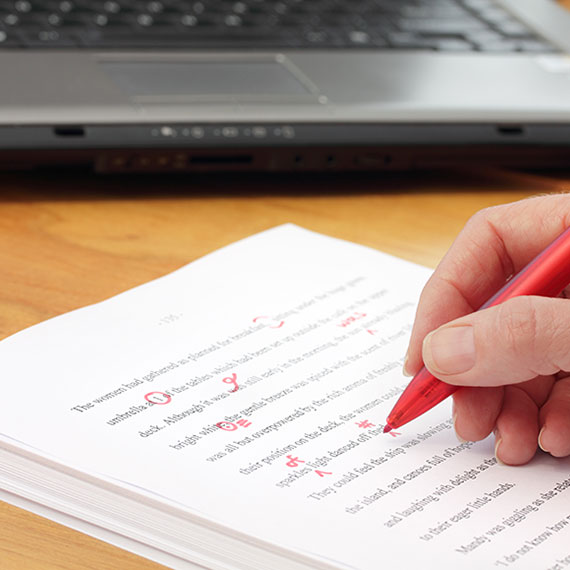Table of contents
A proofread is often included as part of a translation quote. But let’s be real – is proofreading even necessary? After all, it costs extra. And surely the translator is supposed to deliver impeccable text anyway! Right?
The point of proofreading translations
If you’ve ever written a business letter, you probably know that it’s easy to overlook your own typos and spelling mistakes. That’s because the human brain is designed in such a way that, if in doubt, it refers back to something it already knows. In fact, a brain would rather fill in a gap than leave it blank.
This, incidentally, is why witness statements should also be treated with a certain amount of caution. Let’s say you saw a burglar, but didn’t actually get a good look at them. Your brain is loathe to admit that it doesn’t understand something, so it relies on available knowledge instead. Was the burglar wearing a mask? “Definitely”, says your experience, because burglars don’t want to be recognised. Did he have a bag with him? “Of course he did!” (Burglars always carry a bag in the movies. How else would they carry their loot?) Without you consciously realising it, your brain supplemented the situation with details that weren’t even there.
Our brains behave in a similar way when we write a piece of text and then check it again for errors. If, for example, a letter was missing in one of the words, we’d be unlikely to notice it because the brain would recall the correct word and fill in the gap accordingly. In fact, this happens even more when it’s our own text, because we already know the content, so our minds see how it “should” be.
The benefits of a proofread translation
So, no matter how professional your translator is and how careful they are about spelling, in most cases it’s wise to have an editor review their work. Copyeditors have the following advantages:
- They’ve never seen the translated text before, so they’re more likely to notice mistakes.
- They’re specifically trained to detect errors and are experienced in identifying the words that are most prone to errors and the most common spelling mistakes.
- They use special techniques to make sure that nothing is overlooked, such as checking each word separately instead of reading the whole sentence.
Proofreading: an important part of quality assurance
According to the quality standard DIN EN ISO 1710, proofreading is an integral part of the translation process and guarantees the quality of the target text. A proofreading service ensures the following points:
An accurate translation
A copyeditor compares the target text with the source text to ensure that the translation is correct and complete and that nothing has been overlooked or added.- Consistency
A copyeditor makes sure that each term is translated in the same way from start to finish and that the style of the target text is consistent throughout.
- Linguistic accuracy
A copyeditor verifies grammar and spelling accuracy under the latest regulations.
- Fitness for purpose
A copyeditor ensures that the target text meets the requirements specified by the client and fulfils the expectations of the country in question. In this way, they guarantee that the target group is addressed correctly and that the appropriate terminology is used for the target audience, for example.
Proofreading for text available to the public: indispensable
If your translated text is for internal correspondence that will only be released within your company, it’s not essential to have it proofread. After all, a small typo or a missing sentence is unlikely to have serious consequences.
However, if it concerns important information, such as machine operating instructions, then you need to ensure that the target text is absolutely error-free, every time. Operating a machine incorrectly could put your employees in serious danger and even shut down production.
You also need to include a proofread for text that is going to be published. Your company’s public image is not only defined by your services or products, but also by your communication. That’s why it needs to be absolutely perfect. Flawless communication underlines how professional your company is and makes a more convincing impact on your target group.
So, be sure to schedule a proofread for your next translation!
